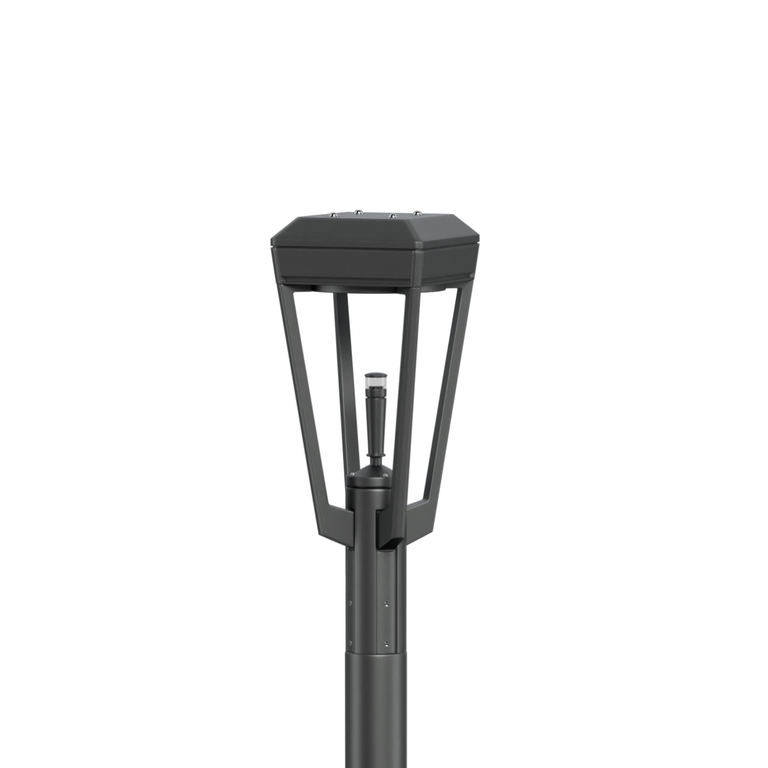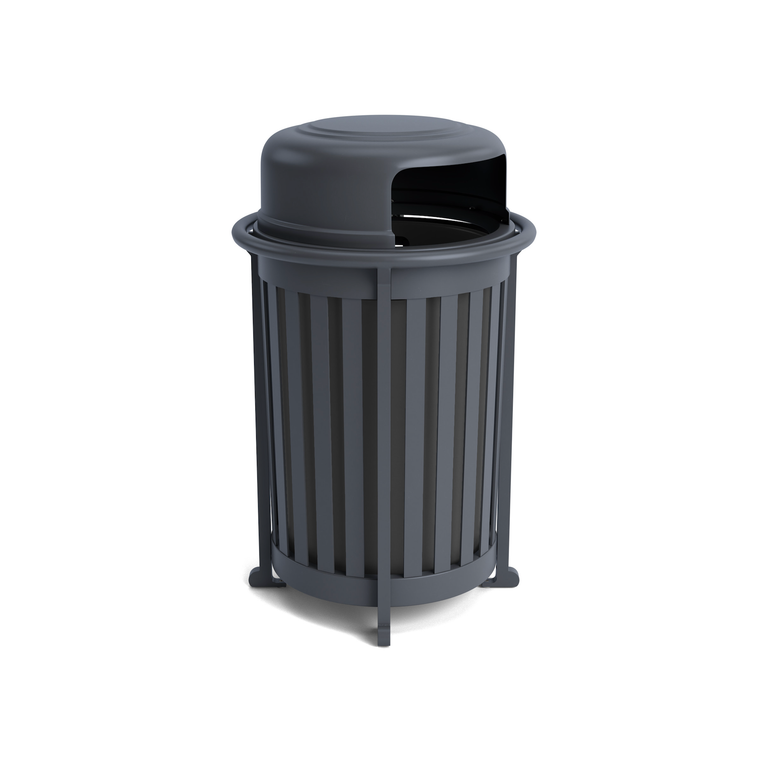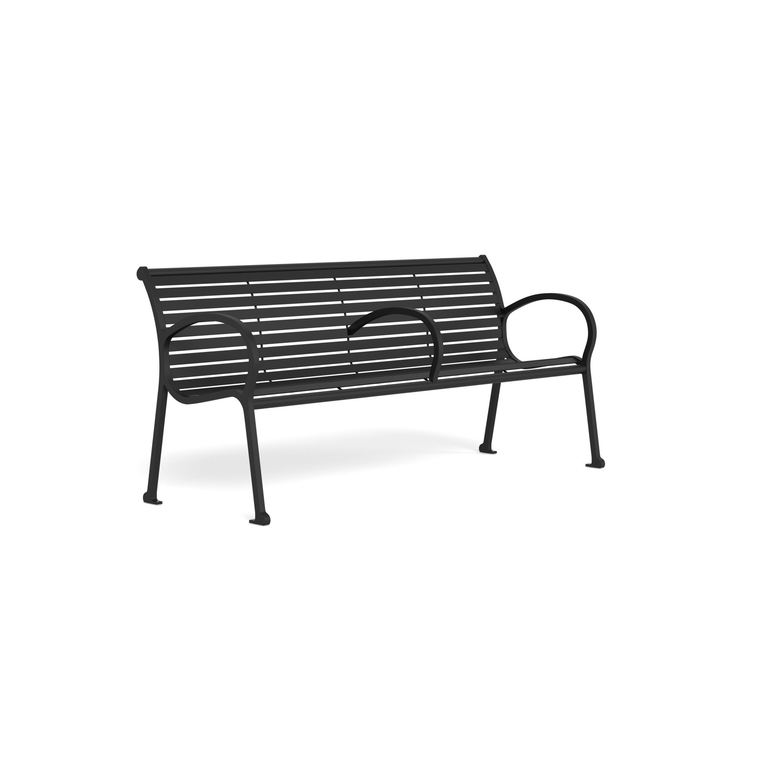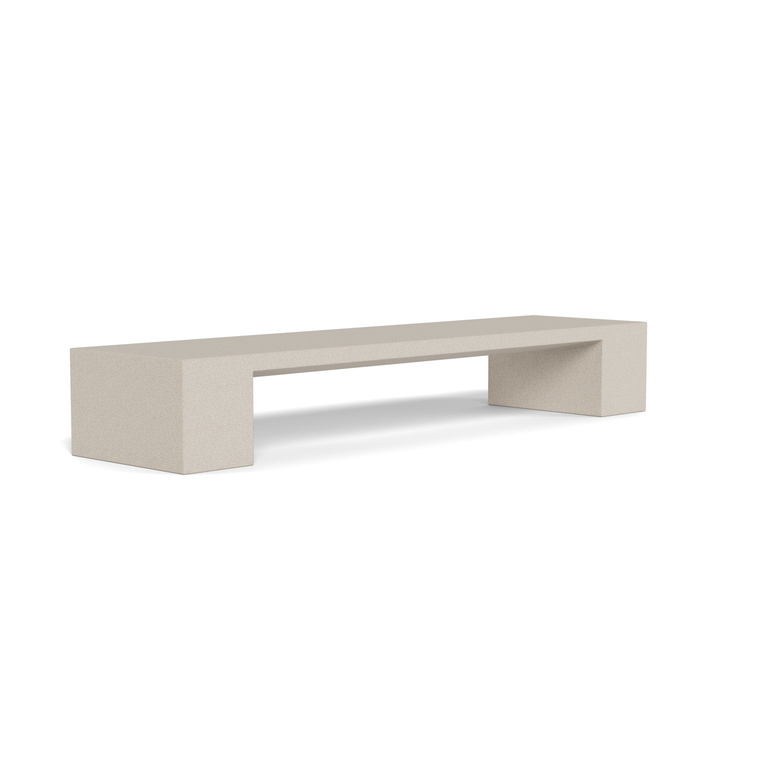Greer Station
Greer, SC
Landscape Forms Elements:
Ashbery Area Lights, Scarborough Benches, Scarborough Litters, Escofet Abril Benches
Design Partners:
Kimley Horn
Greer Station is Greer, SC’s, downtown area, and Trade Street runs through the heart of it. In 2020, the street reopened after extensive reconstruction that eliminated curbs and created a shared street with no vertical grade change between the vehicular area and the pedestrian area. The concept of shared space, where pedestrian use is emphasized over vehicular use, originated in the Netherlands and is common throughout Europe. The shared space model looks at streets as places, and its goal is to build a sense of community through social activity within the space.
The landscape architects of design firm Kimley Horn worked with the City of Greer to create a master plan specific to Greer Station. The idea of shared space appealed to them. The historic nature of the town and the neighborly feel of the downtown could be reinforced through a design that encouraged more pedestrian activity and community events. Kimley Horn Associate Kyle Baugh liked the idea of a design that could bring a vibrancy back to downtown. “Trade Street is now an entirely new public space,” he explains. “It’s not a street, it’s a place.”
City leaders quickly bought into the shared space concept. “What appealed to us about the concept and Kimley Horn’s design is we understood how important scale was to our downtown,” says Greer Mayor Rick Danner. “Trade Street is only 50- to 55-feet wide from building face to building face. We have turn-of-the-century brick structures downtown. The tallest building is just three stories. Trade Street has a quaint, pedestrian, comfortable feel. By leveling the surface, we were able to retain that sense of scale and also give the downtown a more open feel.”
The shared street design cues drivers to slow down and watch for pedestrians. “The landscape and design elements signal this isn’t an ordinary street and drivers need to act differently. The vehicular and pedestrian realms have different hardscape materials that delineate the zones,” says Baugh.
While the revitalization focuses on the future of Greer and positions it for growth, the design also celebrates historical aspects of the town. Landscape Forms’ Ashbery area lights were an apt choice to light the street. Photographs of men on ladders lighting gas lamps along Trade Street one hundred years earlier stuck with Baugh. “Those images resonated with the feel we wanted for the street,” he says. “Ashbery’s internal filament represents a gas lamp, but the LED technology and clean design bring Trade Street into the 21st century.”
Kimley Horn worked with the lighting team at Landscape Forms to integrate many custom features into the Ashbery poles. A larger pole diameter allowed for electrical wiring to run from the base to the top of the pole, and outlets were installed at the base and top of the poles. The custom 19-foot pole height was necessary to meet clearance requirements. A custom mechanism was created to attach dual Ashbery fixtures at 14 feet. Above the fixtures, the pole extends to include a banner arm to display signage and seasonal banners and eyelets that string canopy lighting throughout the downtown. “A lot of engineering happened in the background to create Kimley Horn’s vision,” says Lighting Market Specialist Chad Gleesing. In total, 25 custom 19-foot poles and eight standard 12-foot poles, all with dual fixtures, are installed on Trade Street.
Beyond the custom work, the lighting team contributed photometric layouts to Kimley Horn. “The lighting team gave me the tools I needed to work with the City of Greer,” says Kimley Horn's Laura Handleton. Additional lighting at the intersections had been requested, but Handleton was able to demonstrate how over lighting impedes visual clarity. “Landscape Forms’ photometric plan achieved consistent lighting, avoiding areas of brighter lighting, which hinders vision at night. The addition of the canopy lighting created a lit roof. We didn’t want to overpower the street and lose the comfortable lighting levels,” says Handleton.
Scarborough benches and litters and Escofet Abril benches are also installed along Trade Street. “The palette of materials plays off the historic nature of the town,” says Baugh. “Steel, brick, and concrete are filtered throughout. The black tones of the Scarborough benches and litters and the concrete Abril benches share that historical reference. The elements are contemporary in design but made with materials that honor the past.”
The Trade Street revitalization is also revitalizing the town. An urban downtown hotel and parking garage, both firsts for Greer, are under construction. An apartment project within walking distance of Trade Street is underway, and businesses have been upgrading their storefronts. There is more foot traffic downtown. “People want to include downtown in their activities. Even residents who have lived here a long time find a sense of interest in this new facelift,” says Danner.
“We felt Kimley Horn had become part of the community through all our work over the years,” says Baugh. “The community’s commitment and enthusiasm to revitalize Trade Street got us excited. We all acknowledged that we were building something more than a street.”
Baugh’s vision of bridging Greer’s history with its future has resulted in a downtown that “feels historical but also innovative,” says Danner. "It’s the quintessential quaint main street with period brick architecture, but, on the other hand, we have a new approach to cars and pedestrians and at night this incredible lighting and the vibe of people out walking, eating, and attending events. This project wasn’t about changing traditions; it was about taking a really good downtown and making it a really great downtown.”
Related Products
Articles
Landscape Forms, North America’s leading designer and manufacturer of premium site furniture, structure, LED lighting, and accessories, announces expansions to its Ashbery lighting family. Focused on broadening performance capabilities, the new Ashbery expansions allow the company’s immensely popular line of modern traditional area lights to feature more prominently in a greater range of outdoor spaces.
Landscape Forms Announces New Performance Options for Ashbery Lighting
Throughout its history, Escofet has employed a pioneering strategy of pluralism in design, continuously collaborating with leaders in art and architecture to push boundaries, further innovation, and generate new design language.
Designing the Future Since 1886
What inspires you? In this continuation of Projects in Pictures, we're showcasing the imaginative, interesting, and functional approaches architects and designers are taking in lighting outdoor spaces. Read more.
Projects in Pictures: Exploring Imaginative Approaches to Lighting Outdoor Spaces
Based in Kansas City, Missouri, KEM STUDIO is an award-winning design firm that fuses architecture and industrial design, a combination that’s a natural extension of their underlying design philosophy: Better Design, Better Living.
Doing More Outdoors: Jonathon Kemnitzer of KEM STUDIO on Connecting People to Nature Through Design



